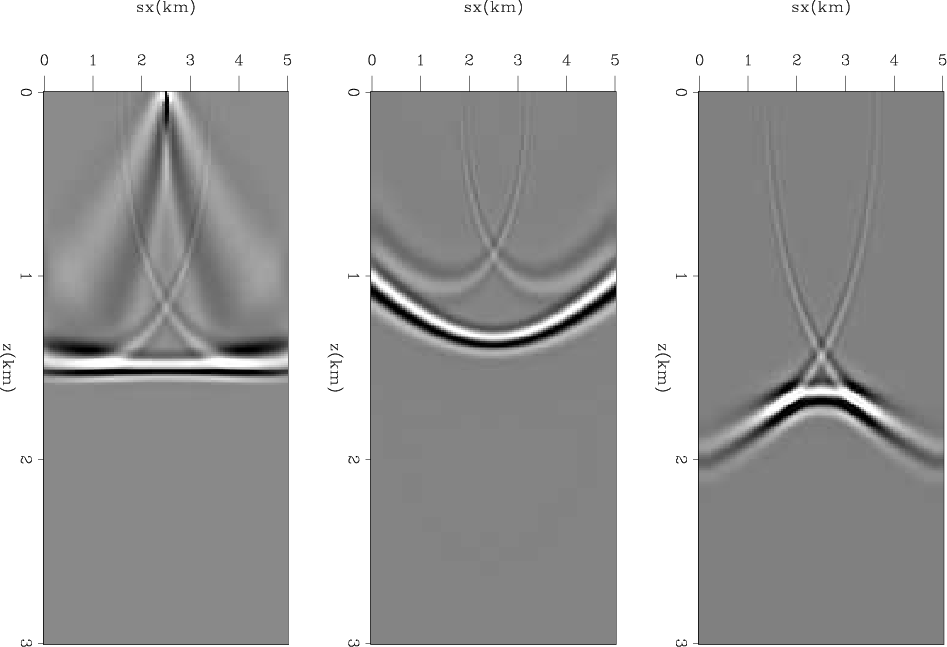|
|
|
|
Computational analysis of extended full waveform inversion |
The extended inversion, whether in model space or data space, needs to satisfy two conditions. First, the observed data can always be explained by the extended model regardless of the selection of the initial model (Biondi, 2012). Second, the extended model should allow gradual change by regularization to produce a non-extended model. The data space extensions that can potentially satisfy these conditions are source location and source ray parameter. The source location extension has the advantage of using the exact same propagation engine as the conventional inversion, so its implementation requires minimal adjustment to existing applications. Moreover, the source location satisfies the extension conditions fairly well. Figure 1 shows source location image gathers for a two-layer model when using the correct velocity, a 10 percent lower velocity, and a 10 percent higher velocity. We see that regularizing the additional axis by a derivative can satisfy the second condition. The disadvantage of this extension is having a velocity model for each source location, which can require a very large memory size and burdensome I/O in 3D.
|
image-s
Figure 1. Source location image gather for a two-layer model when using the correct velocity (left), a 10 percent lower velocity (middle), and a 10 percent higher velocity (right). |

|
|---|---|
|
|
Extending the model by source ray parameter requires plane-wave encoding of the data (Whitmore, 1995; Liu et al., 2006; Zhang et al., 2005). Figure 2 shows source ray parameter image gathers for a two-layer model when using the correct velocity, a 10 percent lower velocity, and a 10 percent higher velocity. Similar to source location, the source ray parameter seems to also satisfy the second condition of model extension. The first condition is tested in the Synthetic Examples section below. In addition, the number of planes is generally much smaller than the number of source locations, so it both reduces the cost and makes the size of the extended model very manageable.
|
image-p
Figure 2. Source ray parameter image gather for a two-layer model when using the correct velocity (left), a 10 percent lower velocity (middle), and a 10 percent higher velocity (right). |

|
|---|---|
|
|
The cost of source location encoding is the same as conventional FWI, whereas the cost of source ray parameter extension is
 is the number of planes. Figure 3 compares the costs of all mentioned inversions assuming
is the number of planes. Figure 3 compares the costs of all mentioned inversions assuming
 ,
,  ,
,
 ,
,
 ,
,
 ,
,
 ,
,
 ,
,
 , and
, and  , where the costs are normalized by the cost of conventional FWI. The log-scale highlights that the difference in cost between these inversions can be several orders of magnitude.
, where the costs are normalized by the cost of conventional FWI. The log-scale highlights that the difference in cost between these inversions can be several orders of magnitude.
|
CostEFWI
Figure 3. Cost comparison of conventional and extended full wavefrom inversions. |

|
|---|---|
|
|
|
|
|
|
Computational analysis of extended full waveform inversion |